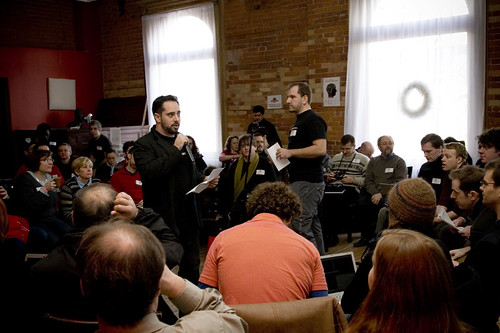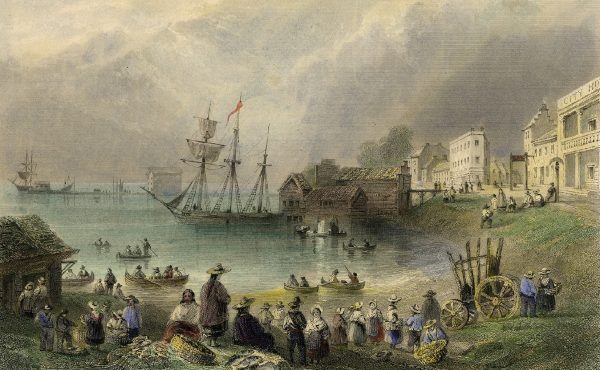
Spacing contributor Ian Malczewski spent September 30-October 3 in Niagara Falls at a joint conference held by the Ontario Professional Planners Institute and the Canadian Institute of Planners. He is sharing some of the lessons he learned there and reflecting on their implications on public space, livability, and sustainability in cities.
When referencing urban planning processes, the term “public participation†often conjures up mental pictures of half-empty community centre halls, text-filled Powerpoint presentations, and confrontational NIMBY-inspired battles. These images are part of the reason that discussions of these processes often elicit responses ranging from indifference to frustration.
Yet public participation remains one of the foundations of contemporary planning practice, and, in Toronto, some well-publicized stories have brought them to the forefront in recent years. The formation of Active 18 in the Queen West Triangle is probably the best-known of these stories, with residents and business owners banding together to try and influence planning in their community.
So when I saw a seminar at the OPPI / CIP Conference called “Joining the Conversation: New Strategies for Consultation and Action,†I highlighted it as one I needed to attend.
The session was hosted by planners from Saskatoon and Jasper, and they outlined some of the creative public participation strategies they had used in developing community plans. Not only did these strategies engage communities, they also empowered them by connecting their voices to the decision-makers behind those plans.
The methods these planners used were a far cry from the Powerpoint presentation / Q & A sessions that have dominated a lot of the consultations I’ve attended. In developing the Jasper Community Sustainability Plan, for example, planners used a variety of tools to encourage people to get involved, including design charrettes, community mapping sessions, a project-specific website and blog, and a Pecha Kucha evening.
A Pecha Kucha is a presentation format which consists of a 20 slide slideshow in which each slide displays for 20 seconds; it’s like Twitter for presentations. Speakers can present on any theme that interests them (their neighbourhood, for example), and share stories, experiences and visions.
A few weeks ago I wrote about the possibilities and challenges of using storytelling as means to inform and guide neighbourhood plans; a Pecha Kucha seems to represent just such an opportunity. In fact, the planners behind the Jasper Community Sustainability Plan created an “Accountability Matrix†to indicate where people’s comments had come from and how they were incorporated into the plan, a laborious but crucial step, they said, in building trust in the community.
The presenters reminded the audience that managing expectations was a key challenge in their public consultation: the reality of urban development is that City Councils often have the final say (or, in the case of Ontario, the OMB). While public consultation is a key component of planning, so too are the overarching policy documents like Official Plans and Provincial Policy Statements.
Still, I was interested by the possibilities these more participatory and deliberative consultation processes could have for planning in Toronto. While Jasper and Saksatoon are smaller communities, their methods, adapted to the Toronto context, could increase civic engagement and help encourage a more democratic planning process.
photo by Rannie Turingan




3 comments
you should check out the citizen’s assembly-inspired work that Mass/LBP does:
http://www.masslbp.com/
Neat stuff.
Why is it that sustainability in urban planning is all to frequently devoid of economic consideration?
Such oversight leads to cities like new Ordos.
http://www.youtube.com/watch?v=0h7V3Twb-Qk&feature
Thanks andrew.
Glen: neat video. I think you could also say that Ordos reflects a focus on economic considerations over sustainability, too: building a new city when the “old” Ordos is only 30 km away.